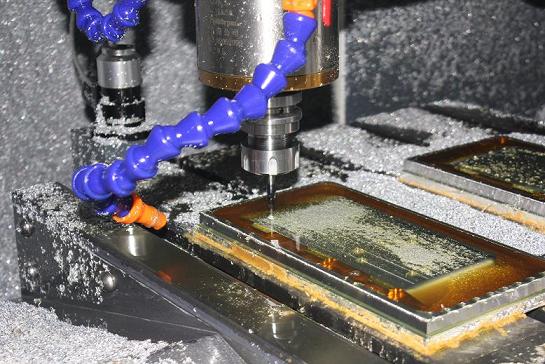Get in touch.
Dear,I will reply in 12 hours. All your message are protected!
Rapid Prototyping Services, Professional manufacturer of CNC Prototyping and 3D Prototyping in China.
CNC (Computer Numerical Control) machining is a widely used manufacturing process known for its ability to create complex and precise parts. When it comes to machining thin-walled components, specific considerations must be made to ensure optimal results. In this article, we will delve into the steps and best practices for CNC machining thin-walled parts, focusing on precision and stability throughout the process.

1.Material Selection:
Choosing the appropriate material is crucial when machining thin-walled parts. Opt for materials with high strength-to-weight ratios, such as aluminum alloys, titanium, or composites, to ensure structural integrity while keeping the weight to a minimum. Consider factors like material thickness, flexibility, and machinability when selecting the ideal material for the specific application.
2.Design Optimization:
Design optimization plays a vital role in machining thin-walled parts. Employ techniques such as ribbing, gusseting, or fluting to reinforce the structure and enhance stability. Use finite element analysis (FEA) software to simulate and analyze the part's behavior under different loads, ensuring that it can withstand the expected forces without excessive deformation or failure.
3.CAM Programming:
Generate a CAM program using specialized software that takes into account the challenges associated with machining thin-walled parts. Optimize the toolpaths and cutting parameters to minimize vibrations, reduce cutting forces, and prevent chatter. Employ adaptive toolpath strategies to maintain consistent chip loads and avoid excessive material removal.
4.Tool Selection:
Selecting the right cutting tools is crucial for machining thin-walled parts. Choose tools with sharp cutting edges and optimized geometries to reduce cutting forces and minimize the risk of deflection. Consider using high-speed steel or carbide end mills with multiple flutes to ensure efficient chip evacuation and improved surface finish.
5.Workholding and Fixturing:
Securely holding thin-walled parts during machining is essential to prevent vibrations and maintain stability. Utilize delicate or vacuum clamping techniques to avoid distortion or damage to the part. Custom fixtures or soft jaws can provide additional support and distribute clamping forces evenly across the workpiece.
6.Machining Techniques:
Implement machining techniques that minimize the risk of deflection and ensure dimensional accuracy. Use climb milling instead of conventional milling to reduce cutting forces. Employ light cutting passes and high spindle speeds to minimize tool engagement and prevent excessive heat buildup. Consider using coolant or air blast to dissipate heat and improve chip evacuation.
7.Monitoring and Inspection:
Monitor the machining process closely when working with thin-walled parts. Use sensors or monitoring systems to detect any potential issues, such as excessive vibrations or deflection. Regularly inspect the dimensions and surface finish of the part using precision measuring instruments to ensure adherence to design specifications.
8.Post-Machining Considerations:
After machining, carefully remove the part from the fixture or workholding device to avoid any distortion or damage. Perform any necessary post-machining operations like deburring, polishing, or surface treatments to achieve the desired final appearance and functionality.
Conclusion:
Machining thin-walled parts requires meticulous attention to detail and a focus on precision and stability. By considering material selection, design optimization, CAM programming, tool selection, workholding techniques, machining techniques, monitoring and inspection, and post-machining considerations, you can achieve exceptional results in CNC machining thin-walled parts. Implement these best practices to ensure the structural integrity and dimensional accuracy of your thin-walled components.
© 2005-2025 Shenzhen Tuowei Model Technologies Co., Ltd. | All Rights Reserved 粤ICP备11096697号